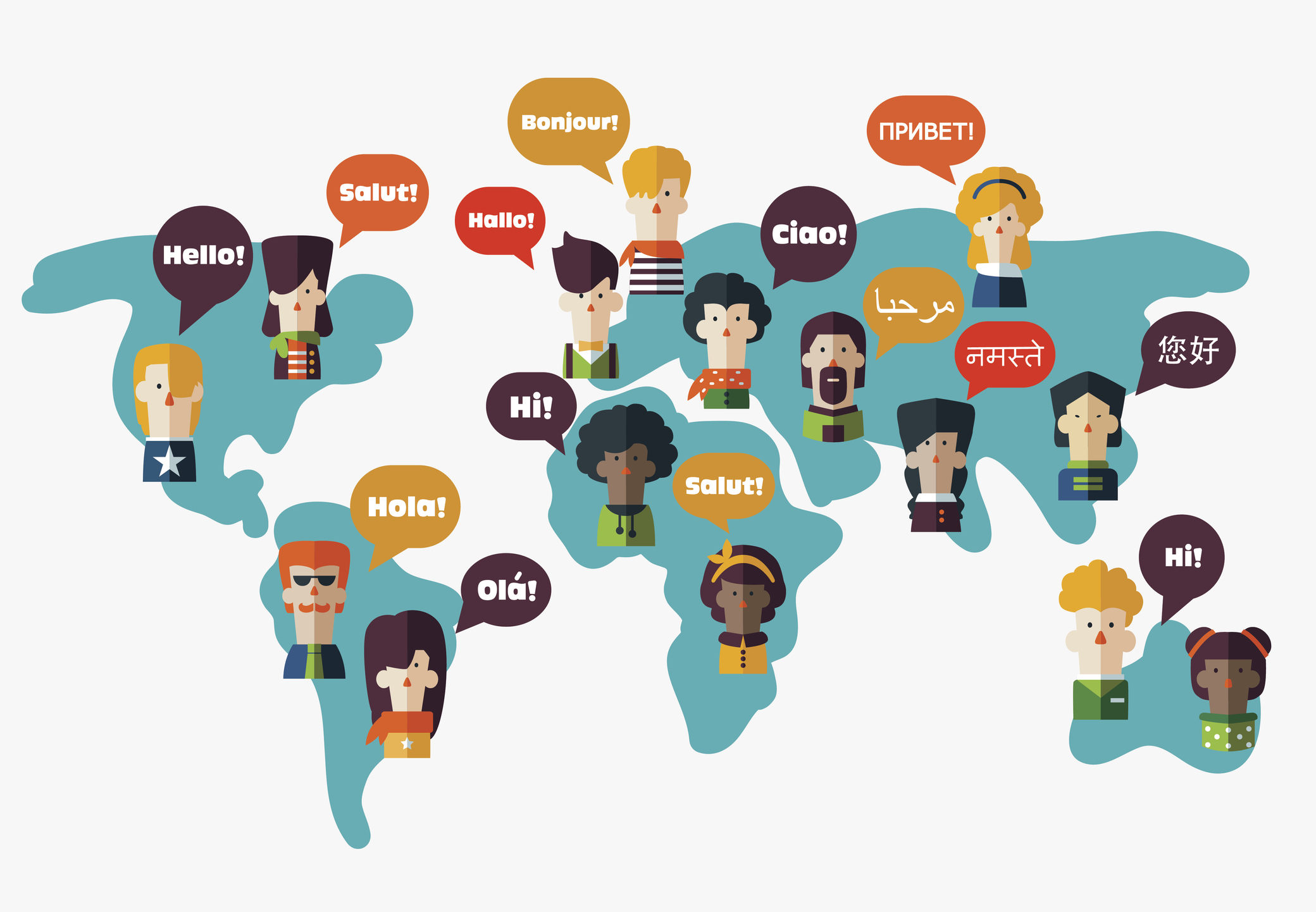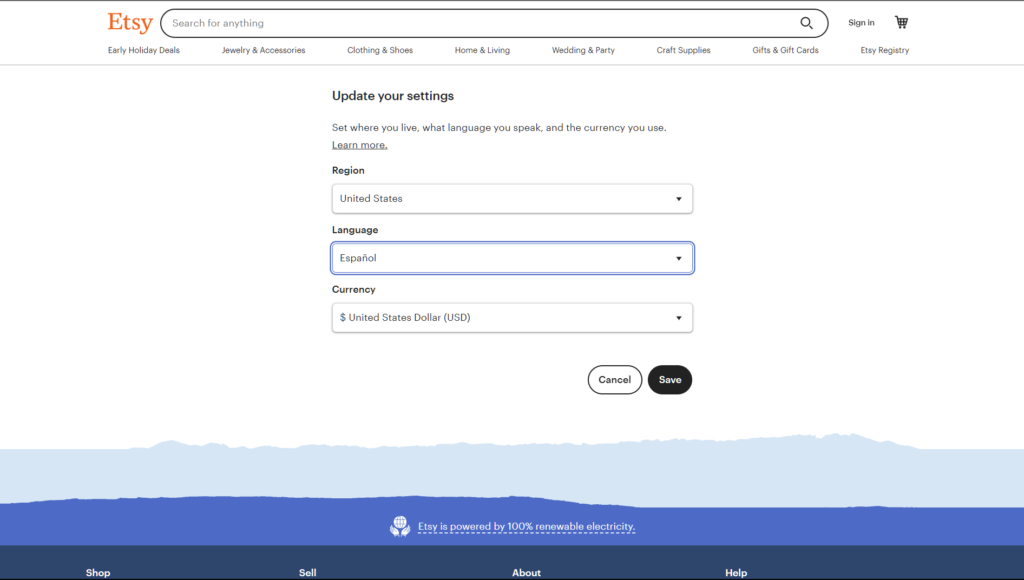
The internet has shrunk the world, bringing countries, people, and cultures closer together. But language barriers can still hinder communication and limit your website’s reach. Imagine the potential if you could connect with a global audience, fostering trust and boosting your brand image among website visitors, internet users, people, by having a multilingual website. This is the power of multilingual websites.
By offering content in multiple languages on your multilingual website, you can unlock a world of opportunity, enhance user experience, expand your reach, and drive business growth. This article explores the compelling benefits of multilingual websites and equips you with the knowledge to implement this powerful strategy.
Table of Contents
Key Takeaways
- Expand Your Reach: Creating a multilingual website can help you reach a wider audience and tap into new markets by offering content in multiple languages.
- Increase Engagement and Loyalty: By providing information in users’ preferred languages, you can enhance user experience, build brand loyalty, and increase awareness globally.
- Drive Revenue Growth: Boost your revenue potential by attracting more visitors, increasing conversions, and expanding your customer base through linguistic inclusivity.
- Enhance User Experience: Implementing multilingual features and ensuring accurate translations can improve user satisfaction and lead to higher engagement on your website.
- Optimize Marketing Strategies: Utilize data insights to develop a targeted multilingual strategy that aligns with market preferences and user behaviors for better results.
- Stay Competitive: In a globalized world, having a multilingual website is not just beneficial but essential for staying competitive and relevant in diverse markets.
Understanding the Importance of Multilingual Website
Impact on User Experience
Linguistic inclusion is crucial for reaching a wider audience and breaking down communication barriers. Diverse languages cater to various cultural backgrounds, enhancing accessibility and engagement.
Embracing multilingualism allows websites to connect with users globally, fostering a sense of belonging and understanding. Cultural nuances are better captured through language diversity, enriching the overall user experience.
Language profoundly influences user interaction, affecting navigation, comprehension, and engagement. A website in multiple languages ensures clarity and ease of use, enhancing user satisfaction and retention rates.
As an example, Etsy provides a fully localized experience by allowing users to select their preferred language, region, and currency, ensuring they receive information tailored to their specific location. The screenshot above displays the available localization settings.

Embracing Inclusivity
By adopting a multilingual approach, websites demonstrate a commitment to inclusivity and respect for diverse linguistic backgrounds. Such initiatives foster a sense of community among users worldwide.
Inclusive design promotes equal access to information, products, and services for all users. It eliminates language barriers, ensuring that everyone can engage with the content effortlessly.
Key Benefits of Multilingual Websites
Expand Your Global Audience
Multilingual websites significantly enhance global reach and open doors to new markets. By breaking down language barriers, businesses can connect with diverse audiences worldwide.
Offering content in multiple languages allows companies to tap into new customer segments. Expand beyond your native language to reach a wider audience base, attracting potential customers who prefer browsing in their native language. This strategy increases website traffic, brand awareness, and ultimately leads to higher conversion rates.
Furthermore, you can also target untapped international markets. Analyze website traffic data to identify regions with high traffic but no current language support. By catering to the preferred languages in these regions, you can unlock new markets and exponentially increase your global reach.
User Engagement
Enhancing user engagement is another key benefit of multilingual websites. When users can access information in their preferred language, they are more likely to spend time exploring the site’s content. This personalized experience fosters a stronger connection between the user and the brand.
Moreover, providing content in multiple languages shows a commitment to cultural diversity, making users feel valued and respected. This positive user experience translates into higher engagement levels, lower bounce rates, and increased chances of repeat visits.

Credibility and Trust
By offering multilingual websites, businesses can establish credibility and build trust with diverse audiences. When users encounter a website available in their language, they perceive the brand as more reliable and professional. This instills confidence in potential customers and encourages them to engage further with the company.
Having a multilingual website demonstrates an understanding of the global landscape and a willingness to cater to different cultural preferences. This inclusive approach not only enhances credibility but also helps foster long-term relationships with customers from various backgrounds.
Enhance User Experience and Conversions
Offering multilingual websites attracts visitors with a user-friendly language selection menu, enhances SEO rankings with language versions, and reduces bounce rates by allowing users to switch languages easily. This improves overall user experience and empowers you to implement language-specific marketing strategies.
Tailoring your marketing messages to different regions and languages can significantly impact your profits.
Expanding into New Markets
Targeting Regions
Identify untapped international markets by analyzing countries where your website receives high traffic. Consider preferred languages in these regions to tailor content.
Expanding into new regions allows you to reach a broader audience, increasing opportunities for growth and visibility. By understanding regional languages, you can effectively communicate with potential customers.
Cultural Adaptation
Understand the importance of cultural sensitivity when offering products or services in diverse regions. Translations play a crucial role in ensuring that your content resonates with local audiences.
Tailoring your website to match cultural preferences can enhance user experience and build trust among competitors. Adapting content to suit different cultural norms can lead to increased engagement and conversions.
For example, Lipton tea in the UK has a minimalistic design; however, in Japan, they have a brighter and vibrant box packaging, along with more variety of tea flavours.

Gaining Competitive Advantage
By offering your website in multiple languages, you establish a competitive edge over competitors who only operate in one language. This strategy enables you to stand out in crowded markets.
Catering to diverse audiences through multilingual websites demonstrates your commitment to inclusivity and accessibility. It also shows that you value all users, regardless of their preferred language.
Building Brand Loyalty and Reputation
Foster a Global Community
By offering your website in multiple languages, you can reach a wider audience and establish trust with international customers. This approach fosters a sense of belonging among diverse groups, embracing multiculturalism and creating a global community around your brand.
By going the extra mile to provide multilingual options, you convey a message of respect towards different cultures and languages. This gesture can significantly impact how international customers perceive your brand, leading to increased loyalty and positive word-of-mouth recommendations.
Solidify Brand Reputation
Tailoring your website content to specific languages strengthens your brand reputation on a global scale. Speaking directly to customers in their native languages shows that you understand their needs and are dedicated to providing a seamless user experience.
This personalized approach, along with localized content and product descriptions, builds trust and positions your brand as one that values authenticity and connection with its international audience.
Bolt is an excellent case study in maintaining a unified brand identity across its worldwide social media platforms. Regardless of whether you’re browsing the Instagram accounts for Bolt Portugal, Bolt Nigeria, Bolt France, or Bolt Ireland, you’ll notice the iconic green color scheme present throughout. Nevertheless, each account is tailored to its specific market, showcasing local nuances.
An illustration of this approach is the content strategy of depicting cities using emojis, yet customizing it for different locations such as Portugal (on the left), France (in the center), and Ireland (on the right).

Implementing Multilingual Features on Your Website
User-Friendly Language Selection
Enhance user experience by integrating user-friendly language selection tools on your website. Allow visitors to easily switch between languages with a prominent dropdown menu or flags representing different languages.
Create a seamless transition for users to navigate through multilingual web content effortlessly. Implement intuitive language switchers that are visible and accessible on every page, ensuring a smooth browsing experience for international visitors.

Optimizing Website Navigation
Optimize your website’s navigation to facilitate seamless language switching. Ensure that the language switcher is prominently displayed in the header or footer of each page, making it convenient for users to select their preferred language.
Improve user engagement by providing clear instructions on how to change languages. Utilize icons or labels for different languages to guide users effectively, enhancing the overall accessibility of your multilingual site.
Consistent Branding Across Languages
Maintain consistent branding across all language versions of your website. Preserve brand identity by using the same logos, color schemes, and design elements throughout each linguistic variation, reinforcing brand recognition globally.
Ensure that translated content aligns with your brand voice and values. Hire professional translators to maintain consistency in tone and messaging across different languages, preserving the integrity of your brand image.
Maximizing Translation Quality
Professional Translation Services
Investing in professional translation services is crucial for ensuring the accuracy and quality of your multilingual website. By utilizing expert translators, you can guarantee that your content is translated correctly, maintaining the right tone and message across different languages. This not only enhances user experience but also reflects positively on your brand’s credibility.
Moreover, to uphold translation integrity, it is essential to conduct regular quality checks on your multilingual website. These checks help identify any errors or inconsistencies in the translations, allowing you to make necessary corrections promptly. By maintaining a high standard of accuracy, you can ensure that users receive information in their preferred language without any confusion.

Culturally Relevant Translations
User satisfaction hinges on providing culturally relevant translations that resonate with your target audience. Tailoring content to specific cultural nuances and preferences demonstrates a deep understanding and respect for diverse communities. By adapting the layout and language to suit different regions, you can create a more engaging and personalized experience for users worldwide.
- Pros:
- Enhances user experience
- Builds trust and credibility
- Expands global reach
- Cons:
- Requires ongoing maintenance
- Cost implications for professional services
Leveraging Data Insights for Multilingual Strategy
Analyzing User Behavior
Analyzing user behavior across different language versions is crucial for a multilingual website’s success. By studying how users interact with each language option, businesses can identify popular content and optimize the user experience.
Understanding which languages attract more traffic or engagement helps in prioritizing content creation and updates. For instance, if data reveals that the Spanish version of a website receives significantly more clicks on product pages, companies can focus on enhancing that section to drive conversions.
Tailoring Content
Customizing content to suit specific language preferences is a powerful way to enhance user engagement. By utilizing data, businesses can tailor their messaging, imagery, and overall tone to resonate better with diverse audiences.
For example, if analytics show that French-speaking users spend more time on lifestyle articles compared to other language speakers, companies can adjust their editorial calendar to include more lifestyle-focused content in the French version of the website. This personalized approach increases relevance and boosts user satisfaction.
Optimizing Multilingual SEO
Optimizing multilingual SEO based on data-driven insights is essential for improving search engine rankings across different language versions. By analyzing keywords, search trends, and user queries in various languages, businesses can refine their SEO strategies for each target audience.
Implementing language-specific keywords and meta tags based on data analysis can significantly boost visibility in local search results. This targeted approach ensures that the website ranks higher for relevant searches in each language, driving organic traffic and increasing conversion rates.
Closing Thoughts
By embracing multilingualism, you open your website to a world of possibilities. From fostering a global community to establishing a competitive edge, the advantages are undeniable. Investing in a multilingual website is an investment in your brand’s future, allowing you to connect with diverse audiences and unlock significant growth potential. So, take the leap and unlock the power of multilingual communication – your website, and your business, will thank you for it.
Related Article:
The following article may contain the author’s opinions and interpretations of the subject matter. Any of the products, services, or platforms mentioned is not sponsored or affiliated.
Featured Image courtesy of Qvasimodo via Getty Images/iStockphoto
